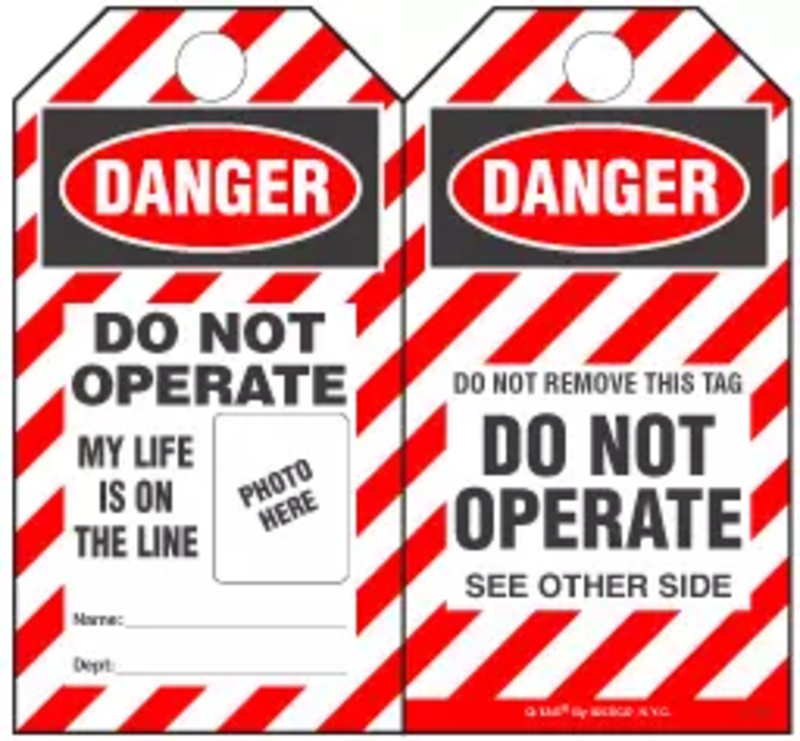What are Some Key Guidelines for Correct Safety Signage in the Workplace?

Imagine this scenario: A worker is badly injured on your job site. Not only is this a tragic event for the worker and his or her family, it’s also a huge risk for a lawsuit that could have debilitating fiscal ramifications for your company.
Fortunately, correctly designed
signage can
go a long way toward preventing injury and even death in the workplace. But how
can you know that the signs you are posting are compliant with the standards
set by Occupational Safety & Health Administration (OSHA) and the American
National Standards Institute (ANSI)? Here’s how to be sure that the safety
signage you are posting is doing its utmost to help prevent injury or death:
1) Colors Count: It pays to know your colors when it comes to signage.
Red is for prohibition, yellow for caution, green for positive action, and blue
for mandatory actions. So for example, to stop someone from
operating machinery, you would want to use a red tag.
2) Shapes Matter: Along with colors, symbols matter for international safety signage. A circle or disc is for prohibition and instructions. Triangles are for warnings. And squares and rectangles are used for emergency and information signs.
3) Buy Right: When you purchase your signage, you want to be sure that it’s designed to be OSHA- and ANSI-compliant, so that you are conforming to the highest safety standards. Look for signage that is durable and easily posted—such as self-laminating safety tags that are developed to withstand the toughest industrial environments.
4) Know When to Use Your Signs: Safety signs must be used whenever a hazard or danger cannot be easily avoided. Before installing safety signs, an employer should examine whether it is possible for the hazard to be avoided or reduced by putting in place precautions that protect everybody, rather than expecting the signs to do all the work of protection.
5) Wordsmithing: Be aware of the nature of wording. The wording of any sign should be easily read and concise. The sign should contain sufficient information to be easily understood. The wording should make a positive, rather than negative suggestion, and should be accurate in fact.
6) It’s Biological: For biological hazard signs, the biological hazard warning should be used to signify the actual or potential presence of a biohazard and to identify equipment, containers, rooms, materials, experimental animals, or combinations of these which contain, or are contaminated with, viable hazardous agents. The term "biological hazard," or "biohazard," should include only those infectious agents that present a risk or potential risk to the well-being of workers and others.
7) Know When to Tag It: Tags should be used as a means to prevent accidental injury or illness to employees who are exposed to hazardous or potentially hazardous conditions, equipment or operations, which are out of the ordinary, unexpected or not readily apparent. They should be used until the identified hazard is eliminated or the hazardous operation is completed.
8) Position and Placement: Signs should be positioned so that they are easily visible and legible from a distance. They must be placed to draw maximum attention to the existing hazards. This means you need to give careful thought to where you locate signs around your facility, and you may need to relocate signs from time to time when you make changes or alterations that affect the visibility or usefulness of existing signs or when the equipment or materials that pose the hazard are moved.
9) Be Alert to New Hazards: Your facility will not be in compliance with the regulations if you just put up signs and forget about them. You must review your sign and tag program regularly to make sure it is still performing the task it was designed to do. For example, whenever new hazards are introduced into the workplace, new signs need to be put up right away. And when temporary hazards arise, tags need to be attached to warn employees until the hazard no longer exists.
For a complete collection of signs and tags, such as self-laminating tags, that adhere to the highest standards of safety per OSHA and ANSI, visit the Idesco Safety web site.